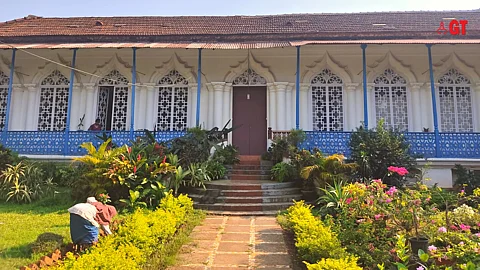

People who travel to Goa, or have visited the place, are amazed by the state's palatial and uniquely-designed houses. These Indo-Portuguese houses have a distinct mix of both Indian and European styles of architecture.
Each of the elements that go into the making of a Goan home, have an interesting story behind it – a unique story of their origin, their uses and how they made their way to Goa.
Here’s your ultimate guide to understanding how these elements came into being and what makes these styles unique to Goa.
Floors
In the past, as Goan society was largely agrarian, the floors of the Goan homes were smeared with cowdung. Gradually, clay and cement tiles began to make an appearance in Goan homes with the advent of the colonialists.
Goa was an important port, and therefore, a lot of tiles from Europe and other parts of Europe found their their way to Goa. Around the 20th century, Goans who travelled to Europe brought 'moulds' back home with them.
If you step inside a big Indo-Portuguese home in Goa, you find huge hallways and ballrooms with an assortment of floor patterns. Some of these have mosaic work, while others have geometric designs and floral patterns.
Mosaic tiles came from Japan, and around the same time, red oxide tile flooring also became popular in Goa. Today, many houses continue to have red oxide flooring. Some homes also have borders and a kind of pattern in the center, or in the corners of the floor of the room.
The raw material for the China Mosaic flooring came from the ships' ballast. Since there was trade between Macau (in China) and Goa, the ballast from these ships was used to make these unique floorings.
If you're lucky, you might find homes with such mosaic floorings and the family story associated with it. Back in the day, if a person in the family worked in countries like Africa, then a zebra or giraffe would be seen in the flooring pattern of their homes. There were many such subtle elements in these floors.
Later, people began to break crockery and use these broken pieces to create unique designs in their flooring.
Railings
Another interesting element in Goan houses is the different types of railings that adorned houses. Some of them were made of wood, cement and also cast iron.
Initially, wooden railings were quiet common in Goa, but the weather conditions did not favour them. Later, a shift to cast iron railings was seen, and this came about due to British influences. Today, many Goan homes still have railings made of cast iron.
Around the 1930s, cement railings appeared in homes and are prominently seen around Goa, even today.
The common patterns of these railings were curves, floral designs, geometric designs, etc.
Finials
Ever wondered why there is a statue of a rooster, solider or lion atop, or outside, Goan houses ? Well, these are finials and they are an integral part of Goa's architecture.
You can find them on rooftops or on gateposts. These clay structures give an insight into the family which lives there. If you see the statue, or finial, of a solider (known as soldados), it indicates that one of the family members was a solider or was in the army. A few years after Liberation, the families of freedom fighters also started installing these finials in their homes.
Another common finial that you see in Goa is a rooster. The 'Rooster of Barcelos' (Galo de Barcelos in Portuguese) is a common symbol of Portugal, and that is probably how the pattern ended up on Goan homes.
Windows
In the good, old days, due to the absence of glass, did you know that the doors and windows of Goan houses were made of oyster shells? And, if you find small, white, translucent 'squares' in the window pane of an old Goan home, then rest assured that these are from oyster shells. Mother of Pearl shells were abundantly found across Goan shores, especially in the Chicalim Bay area.
People started to fit them in the frames of doors. These shells filtered sunlight, and so harsh light would not enter houses which had such windows.
More recently, these oysters have been placed on the endangered list, due to which their usage has been stopped. Eventually, they were replaced by glass, which slowly began gaining in popularity in Goan homes.